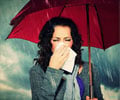Researchers at the Indiana University have tracked the airborne distribution of chlorinated flame retardant by discovering the chemical, ‘Dechlorane Plus’ in the bark of trees
Researchers at the Indiana University have tracked the airborne distribution of chlorinated flame retardant by discovering the chemical, ‘Dechlorane Plus’ in the bark of trees across the north-eastern United States.
Lead authors Xinghua Qui and Ronald A. Hites of the IU School of Public and Environmental Affairs say that the study demonstrates that tree bark can be used as nature's own passive sampling device for detecting the presence and relative concentrations of chemicals in the air.The highest concentrations of Dechlorane Plus were measured near the Niagara Falls, N.Y., factory where this chemical is produced. Rough, porous and high in lipids, tree bark soaks up airborne gases and particles, then keeps them protected from the elements.
"It's really a very convenient technique. The sampling doesn't hurt the tree, and you get an integrated measurement of what the tree has been exposed to over the last few years,” Hites said.
The study, "Dechlorane Plus and Other Flame Retardants in Tree Bark from the Northeastern United States," provides the first data on the prevalence of the chemical in the atmosphere outside of the Great Lakes area. It identifies the epicenter of DP concentrations as being near the factory where the chemical is produced by OxyChem (Occidental Petroleum Corp.). Concentrations in tree bark within a few miles of the factory were several thousand times higher than those found in bark at more distant sampling sites, including Indiana, Virginia and Maryland.
Qui and Hites also used tree bark to test for brominated flame retardants at northeastern U.S. locations. They found them, but at much lower levels than a previous study by Hites and Lingyan Zhu, that found the epicenter of brominated flame retardant concentrations to be near a factory in southern Arkansas that makes these chemicals.
The study also looked for flame retardants in bark samples from Europe and Asia. Bark from China and Korea contained Dechlorane Plus at about 10 times the lowest levels found in the northeastern U.S., suggesting there are Asian sources of this chemical, and they aren't simply reaching Asia through the atmosphere.
Advertisement
"However, the substitute might not always be as safe as hoped. They point out that Dechlorane Plus is present in air, sediment, fishes and herring gull eggs from in the Great Lakes region, suggesting Dechlorane Plus "might be an environmental problem, especially in the lower Great Lakes region,” the authors wrote.
Advertisement
The study is published online in the journal Environmental Science & Technology.
Source-ANI
LIN/P







